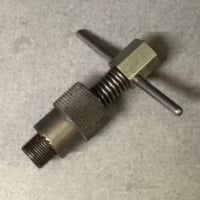Welcome! Here are the website rules, as well as some tips for using this forum.
Need to contact us? Visit https://heatinghelp.com/contact-us/.
Click here to Find a Contractor in your area.
Best Of
Re: The Rise and Fall of Radiator Foundries: A Two Century Journey to Casting Radiators for Today
I think this is fantastic. I live a few blocks from the location of the former National Radiator Co. In Johnstown Pa.
I've also worked in the plumbing and heating industry here in town and have seen my share of radiators.
Also just fantastic seeing manufacturers still at it! Kudos!
I've also worked in the plumbing and heating industry here in town and have seen my share of radiators.
Also just fantastic seeing manufacturers still at it! Kudos!
1
Re: Another Plumber friend gone...asbestosis
Condolences to you and all those who cared for and loved him. May he RIP.
1
Re: Another Plumber friend gone...asbestosis
My condolences to you for the loss of your friend.
Re: Electric hot water source for radiant floors and domestic hot water
I understand that you are trying to satisfy your DHW needs, but even if you come up short, you have options. Your biggest DHW load will be mornings or evenings, so low flow shower heads, shower scheduling (some shower in the morning, some in the evening), short showers.
I installed a solenoid valve on the hot water line to the shower when my kids were young. Attached a timer which would turn on once water flow was detected. After 10 minutes, the timer would energize the solenoid.
Re: Radiator feed and return on same side (feed on top) (return on bottom)
I would feed them the way they were originally fed or diagonally. I would not go bottom bottom. The pipe size you need is dependent on the size of the heat output you need for the room. Have you done a heat loss?
Nameless steam radiator ID (just curious)
Found this hidden under the stairs. It's not connected and doesn't match any of the other rads in the building. Not looking for EDR, just curious if anyone recognizes the brand. There are no words on it anywhere. Photos below. 38" high, 1-column, 3-sections. Each section is about 6" deep (or "wide", if you're looking at it from the end). Not connected across the top, so steam only.
"Wreath" motif on the section tops.

Rosettes on the sides of the sections.

Supply tapping plug

Heavily painted, but not so much that the numbers on the sections can't be read. Both end sections are "334" and the single middle section is "335".

"Wreath" motif on the section tops.

Rosettes on the sides of the sections.

Supply tapping plug

Heavily painted, but not so much that the numbers on the sections can't be read. Both end sections are "334" and the single middle section is "335".

1
Re: Chimney in a semi-conditioned place - anything to add to insulation?
The stove must exit the structure via a listed factory chimney listed to UL 103HT (2,100F). This incorporates listed components such as cathedral ceiling support, firestop, attic insulation shield, roof flashing, storm collar, rain cap and extended roof bracket at min. However, listed chimney connector must be used when within 6" horizontally to combustibles/ 8" to ceilings (above 45 degrees from horizontally). You can follow a ceiling at a 45 degree angle if you maintain the clearances BUT the connector must be readily accessible and not covered with insulation. Stated clearances are air spaces. Therefore, in order to penetrate a drop ceiling, you would need to extend the chimney down to the ceiling and use connector to it.
As for height, the stove mfr. specifies the minimum total system height from the bed of the fire to the flue gas outlet plus the code required minimum above the roof: 3ft. min even with a flat roof plus 2ft above any point within 10ft. horizontally. That means with a 5/12 roof, it must extend at least 5ft measured on the uphill side.
HTH
As for height, the stove mfr. specifies the minimum total system height from the bed of the fire to the flue gas outlet plus the code required minimum above the roof: 3ft. min even with a flat roof plus 2ft above any point within 10ft. horizontally. That means with a 5/12 roof, it must extend at least 5ft measured on the uphill side.
HTH



